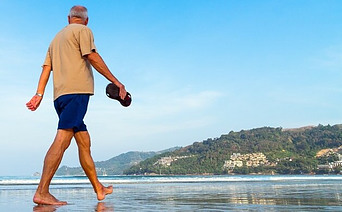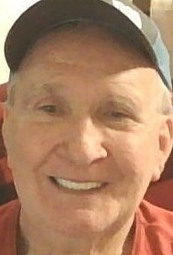Looking And Feeling Younger
Years ( of research have consistently shown that regular physical activity contributes significantly to our overall well being and can indeed slow down the aging process. If you want to dive into the science, numerous studies have linked exercise to improved telomere health that’s the part of our DNA that’s associated with aging. Each time a cell replicates, these telomeres, (either free end of a eukaryotic chromosome,” telomeres act as caps to keep the sticky ends of chromosomes from randomly clumping together”), become shorter, and that shortening is linked to aging. Exercise, it seems, can help maintain telomere length.
Now, this is about more than just DNA. Exercising influences our body’s systems in a symphony of beneficial ways. From improving heart health to increasing blood flow and even enhancing skin health, the benefits are as comprehensive as they are compelling. Moreover, the mental and emotional perks are just as remarkable. Regular exercise can uplift your mood, sharpens your mind, and even helps you sleep better at night.
Don’t worry too much about starting a rigorous routine right off the bat. The key is consistency and finding the right balance for you. You can always adjust your approach down the road. Choose something that you feel comfortable doing, whether it’s daily walks, yoga, swimming, or cycling. There’s a lot going on within your body with each active step you take for your health.
As we move into the next section, we’re going to look into the ‘Physical Perks: How Exercise Keeps Your Body Young,’ and trust me, you’re going to find out about the transformative powers of regular physical activity on your body.
Physical Perks: How Exercise Keeps Your Body Young
 You’re about to find out why hitting the gym isn’t just good for your current self, but also for your future self. It’s clear that regular physical activity holds the key to not only looking younger but feeling that way too. So, what’s happening under the skin when you exercise?
You’re about to find out why hitting the gym isn’t just good for your current self, but also for your future self. It’s clear that regular physical activity holds the key to not only looking younger but feeling that way too. So, what’s happening under the skin when you exercise?
Firstly, think of your muscles as the engine of your youth. With regular strength training, you can maintain muscle mass and strength, crucial elements that often decline with age. This isn’t only about looking fit; it’s about preserving the vitality you need for everyday activities. Lifting weights or doing body weight exercises signals your body to hold onto muscle, keeping you strong and capable.
Stepping into the metabolism aspect, exercise can rev up your body’s natural calorie burning machinery. A higher metabolism means better weight management, which in turn reduces the strain on your body and keeps you looking lean. Regular cardio sessions, from brisk walking to cycling, ignite this metabolic fire.
But let’s not overlook flexibility a key player in the youth game. Stretching and activities like yoga keep the body limber and help prevent the stiffness and discomfort that can come with aging. This way, you can tie your shoes with ease, reach the top shelf without a struggle, and maintain an active, independent lifestyle.
Lastly, your bones are silently thanking you with every step, jump, and lift. Weight bearing exercises fortify your skeletal system, reducing your chances of developing osteoporosis. This is vital for longevity, as strong bones protect against fractures and injuries that can severely limit mobility in later years.
Remember, the goal isn’t to turn back the clock, but to enjoy the time you have with vigor and spirit. Choose activities that you feel comfortable doing, whether it’s dancing, swimming, or hiking outdoors. I really hope that you take these points to heart because they are the blueprint for a younger you both inside and out.
The Feel-Good Factor: Exercise for Mental Youthfulness
You’re going to find out about the undeniable link between staying active and maintaining a sharp, healthy mind. Regular physical activity goes beyond building muscle and burning calories; it’s like a tonic for your brain, keeping it as fit as your body.
I’m here to help you understand that exercise is a powerful stress buster. Physical activity increases the production of endorphins, which are natural mood lifters. It’s also a way to channel energy and frustration in a positive way, helping to alleviate anxiety and depression.
In my opinion, the cognitive benefits of exercise are just as compelling as the physical ones. Research shows that consistent exercise can help delay age related memory decline and protect against neurodegeneration. By staying active, you’re not just working out your body, but you’re also fortifying your mind against the challenges of aging.
But don’t worry too much about having to engage in intense workouts to reap these benefits. Even moderate exercise, like a daily walk or yoga session, can contribute to a healthier, more resilient brain as you age.
The Social Side of Exercising: Staying Young Together
If you’ve ever hit the gym with a friend or joined a community sports league, you know there’s a special energy that comes from sweating it out with others. It’s not just about staying fit; it’s about the connections you make while keeping your body moving.
Joining group fitness classes like yoga, cycling, or dance can open the door to a wealth of social opportunities. These settings not only encourage camaraderie, but they also create a sense of accountability that can keep you coming back. And let’s be real, a little friendly competition never hurt anyone; it can actually push you to work harder and achieve more.
What’s brilliant about this social aspect of exercising is that engaging with peers can bolster your emotional well being. Shared experiences, like celebrating reaching fitness milestones or encouraging each other through a tough workout, build strong, supportive ties. This human connection is crucial as we age, helping us to feel valued and understood.
But let’s say that you may prefer spending time alone, or maybe group workouts aren’t your thing. Don’t worry too much about that. Even acknowledging your regulars at the gym or having a quick chat with someone on the next treadmill can enrich your day. And when those days add up, you’ve woven a web of interactions that contribute to your overall sense of youthfulness and vigor.
Amazing, isn’t it? When you blend the physical benefits of exercise with its social perks, you’re not just working out you’re weaving a stronger fabric of community around you. Next, I’m going to give you some practical advice on how to kickstart this journey and keep the fire burning in your fitness routine.
 Making the Commitment: Steps to Embrace Exercise for Youthfulness
Making the Commitment: Steps to Embrace Exercise for Youthfulness
If you’re convinced that exercising can help keep you looking and feeling younger, it’s time to take action. Starting is the hardest part, but here’s some advice to help you get the wheels turning.
First, remember that your first attempt doesn’t need to be your last. Begin with small, manageable workouts that you can gradually build upon. Consistency over intensity is key when you’re starting out.
Set yourself up for success by setting realistic goals. Whether it’s walking for 15 minutes a day or attending two fitness classes per week, choose targets that challenge you without leading to burnout or injury.
Keep a log or use an app to track your progress. Seeing how far you’ve come can be a powerful motivator. Plus, it can help you identify patterns and adjust your routine as needed.
Exercise should be fun, so choose something that agrees with you. Whether you love dancing, swimming, or lifting weights, there’s no one size fits all approach to staying active. Mixing up your routine can fend off boredom and keep you engaged over time.
Last but not least, consult with healthcare professionals, especially if you have pre existing health conditions. They can provide personalized advice and ensure you’re exercising safely.
Late Word
Remember, staying young at heart and body isn’t about defying age, it’s about embracing life with vigor and resilience. Let exercise be the tool that helps you do just that. And remember, it’s never too late to start!



